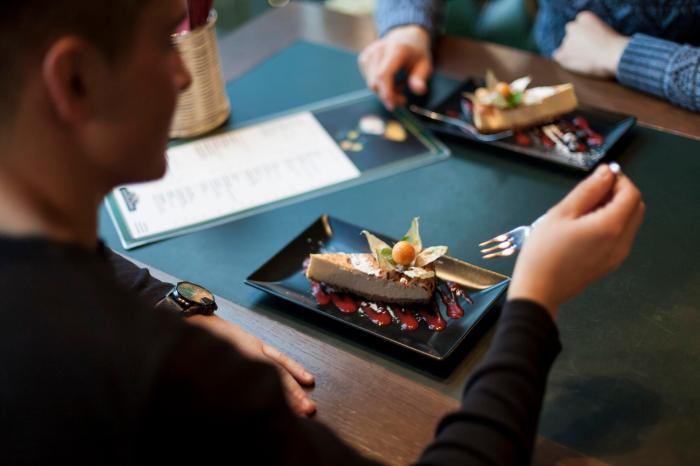
Emerging Fusion Cuisines: Global Culinary Fusion Trends

Global culinary fusion trends – The culinary landscape is constantly evolving, with new fusion cuisines emerging all the time. These trends are driven by a number of factors, including globalization, travel, and the increasing availability of ingredients from around the world. As a result, chefs are becoming more adventurous in their cooking, blending flavors and techniques from different cultures to create new and exciting dishes.
Some of the most popular fusion cuisines include:
- Asian-European fusion: This cuisine combines the flavors and techniques of Asian and European cuisines, resulting in dishes that are both familiar and exotic. Some popular Asian-European fusion dishes include sushi burritos, ramen burgers, and pad thai pasta.
- Latin-American fusion: This cuisine combines the flavors and techniques of Latin American and other cuisines, resulting in dishes that are full of flavor and spice. Some popular Latin-American fusion dishes include tacos al pastor, ceviche, and empanadas.
- African-American fusion: This cuisine combines the flavors and techniques of African and American cuisines, resulting in dishes that are both hearty and flavorful. Some popular African-American fusion dishes include fried chicken and waffles, collard greens with smoked turkey, and mac and cheese.
The emergence of fusion cuisines is a testament to the globalized world we live in. As people travel more and become more exposed to different cultures, they are becoming more open to new and different flavors. This is leading to a more diverse and exciting culinary landscape, with new fusion cuisines emerging all the time.
Regional Fusion Innovations
As the culinary world continues to evolve, fusion cuisine has emerged as a dominant force, bringing together flavors and techniques from diverse regions to create innovative and tantalizing dishes. Regional fusion innovations are particularly exciting, as they showcase the unique ways in which local flavors and ingredients are being blended with global influences to create new culinary experiences.
Regional chefs and food enthusiasts play a vital role in driving these culinary innovations. They are the ones who are deeply connected to their local food cultures and have the knowledge and creativity to experiment with new flavors and ingredients. As a result, regional fusion dishes often reflect the unique character and heritage of the region from which they originate.
Examples of Regional Fusion Innovations
- Tex-Mex cuisine: This fusion cuisine combines the bold flavors of Mexican cuisine with the hearty ingredients of Texan cooking. Examples include tacos filled with brisket, fajitas seasoned with chili powder, and queso dip made with melted cheese and ground beef.
- Nikkei cuisine: This fusion cuisine blends the flavors of Japanese cuisine with the ingredients and techniques of Peruvian cuisine. Examples include ceviche made with raw fish marinated in aji amarillo chili pepper sauce, sushi rolls filled with avocado and salmon, and tiradito, a thinly sliced fish dish served with a citrus-based sauce.
- Goan cuisine: This fusion cuisine combines the flavors of Portuguese cuisine with the ingredients and techniques of Indian cuisine. Examples include vindaloo, a spicy pork or beef dish cooked in a vinegar-based sauce, sorpotel, a pork dish cooked in a spicy tomato-based sauce, and feijoada, a bean stew made with pork and chorizo.
Cultural Cross-Pollination
The world of cuisine has become a melting pot of cultures, where flavors and techniques from different corners of the globe are seamlessly intertwined. This cultural cross-pollination has given rise to a vibrant and ever-evolving culinary landscape, where traditional dishes are reimagined with innovative twists and new flavor profiles emerge.
The exchange of culinary ideas and techniques is a testament to the interconnectedness of our world. As people travel, migrate, and interact with diverse cultures, they bring their culinary traditions along with them. These traditions then mingle with local cuisines, resulting in a fascinating fusion of flavors and textures.
The Influence of Cultural Beliefs and Traditions
Cultural beliefs and traditions play a significant role in shaping the development of fusion dishes. For instance, in many Asian cultures, the concept of yin and yang is reflected in the balance of flavors in their cuisine. Sweet and sour, hot and cold, and crunchy and soft elements are carefully combined to create harmonious dishes.
Similarly, in Mediterranean cuisine, the use of fresh herbs and spices is deeply rooted in cultural traditions. These herbs and spices are not only used for their flavor but also for their medicinal properties. As Mediterranean cuisine has spread to other parts of the world, these traditional ingredients have found their way into fusion dishes, adding a distinctive layer of flavor and aroma.
The Role of Social Interactions
Social interactions also contribute to the cross-pollination of cultures. When people from different backgrounds come together to share meals, they often experiment with combining flavors and ingredients from their respective cuisines. This can lead to the creation of entirely new dishes that reflect the diverse culinary heritage of the participants.
For example, the popular dish “tacos al pastor” is a fusion of Mexican and Lebanese cuisines. It originated in Mexico City, where Lebanese immigrants introduced the concept of marinating meat on a vertical spit. This technique was then combined with traditional Mexican flavors, resulting in a unique and flavorful dish that has become a staple of Mexican street food.
Sustainability and Fusion
Sustainability has emerged as a significant concern within the culinary industry, and fusion cuisine has played a pivotal role in promoting sustainable practices. Chefs worldwide are embracing fusion techniques to create dishes that not only tantalize taste buds but also align with environmental goals.
Fusion cuisine allows chefs to experiment with diverse ingredients and flavors, promoting the use of local and seasonal produce. By sourcing ingredients from local farmers and suppliers, chefs reduce carbon emissions associated with long-distance transportation and support the local economy. Seasonal ingredients ensure dishes are not only fresh and flavorful but also reduce waste, as chefs can incorporate seasonal produce into their menus.
Reducing Food Waste
Fusion techniques can significantly reduce food waste. Chefs can use fusion dishes to transform leftover ingredients into innovative creations, minimizing waste and promoting resourcefulness. For example, a chef might combine leftover vegetables and grains to create a flavorful stir-fry or use leftover bread to make croutons for salads or soups.
Supporting Sustainable Farming Practices
Fusion cuisine can also support sustainable farming practices by promoting the use of ingredients from sustainable sources. Chefs can choose to work with farmers who prioritize ethical and environmentally friendly practices, such as organic farming or regenerative agriculture. By doing so, they encourage farmers to adopt sustainable methods, benefiting the environment and local communities.
Future of Fusion

The future of global culinary fusion trends is brimming with exciting possibilities and boundless creativity. As the world becomes increasingly interconnected, the exchange of ideas, ingredients, and techniques will continue to fuel the evolution of fusion cuisine.
One notable direction is the integration of technology into the fusion experience. Artificial intelligence (AI) and machine learning (ML) can assist chefs in creating innovative flavor combinations and optimizing recipes. Additionally, virtual and augmented reality (VR/AR) can enhance the dining experience, providing immersive culinary journeys that transcend geographical boundaries.
Sustainability and Fusion
Sustainability will play a pivotal role in shaping the future of fusion cuisine. Chefs will increasingly prioritize the use of local, seasonal ingredients to reduce environmental impact. Plant-based and alternative protein sources will gain prominence, offering both health and environmental benefits. Fusion dishes will showcase sustainable practices, such as upcycling ingredients and reducing food waste.
Cultural Cross-Pollination, Global culinary fusion trends
Cultural cross-pollination will continue to drive the evolution of fusion cuisine. As people travel more frequently and global communities become more interconnected, culinary traditions will continue to blend and inspire one another. This cross-fertilization will result in a kaleidoscope of flavors and textures, creating a truly global culinary landscape.